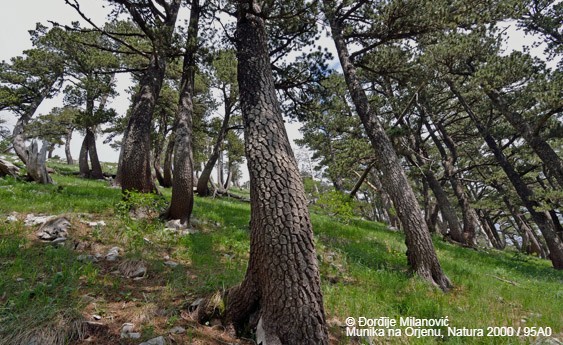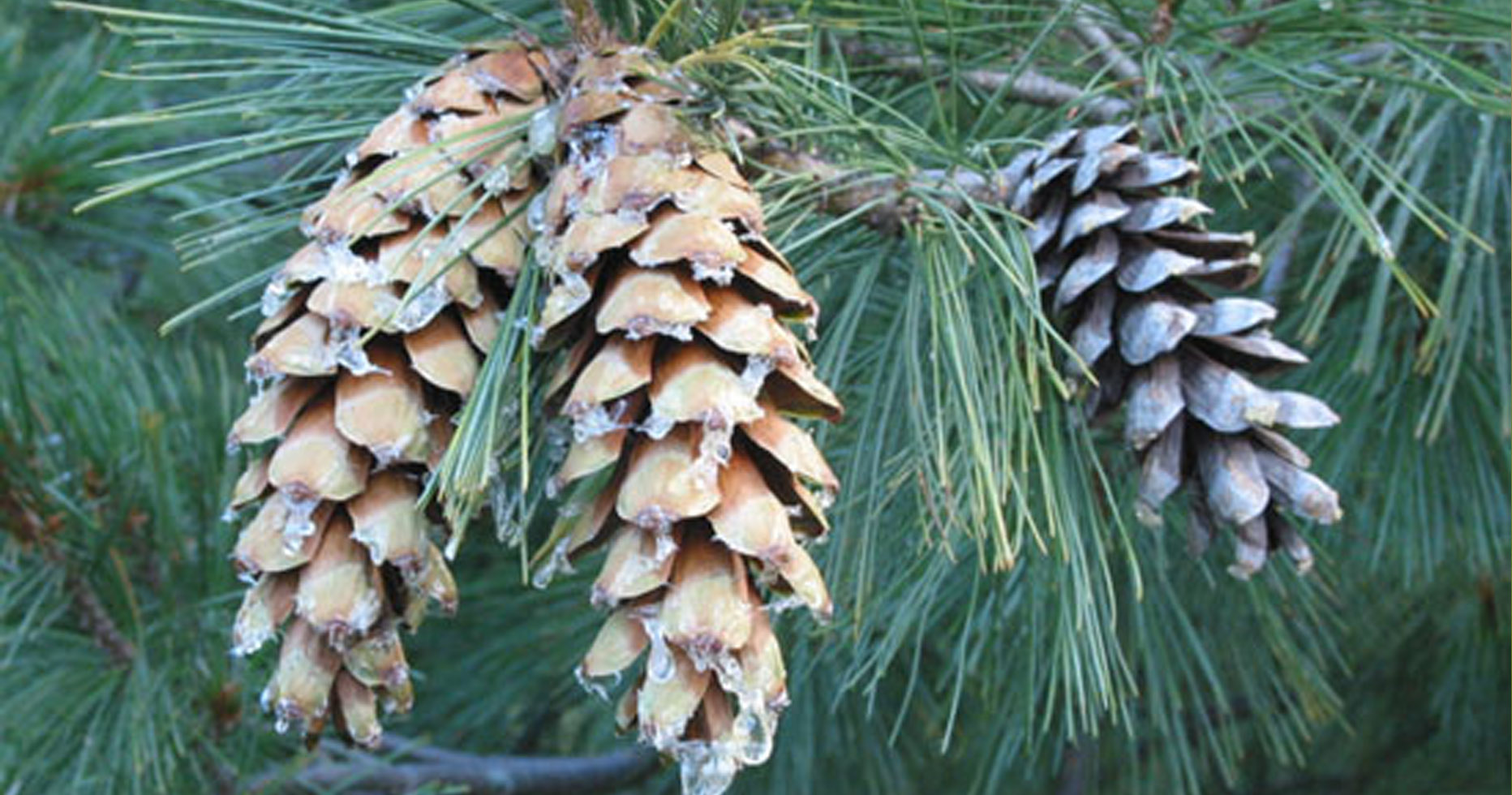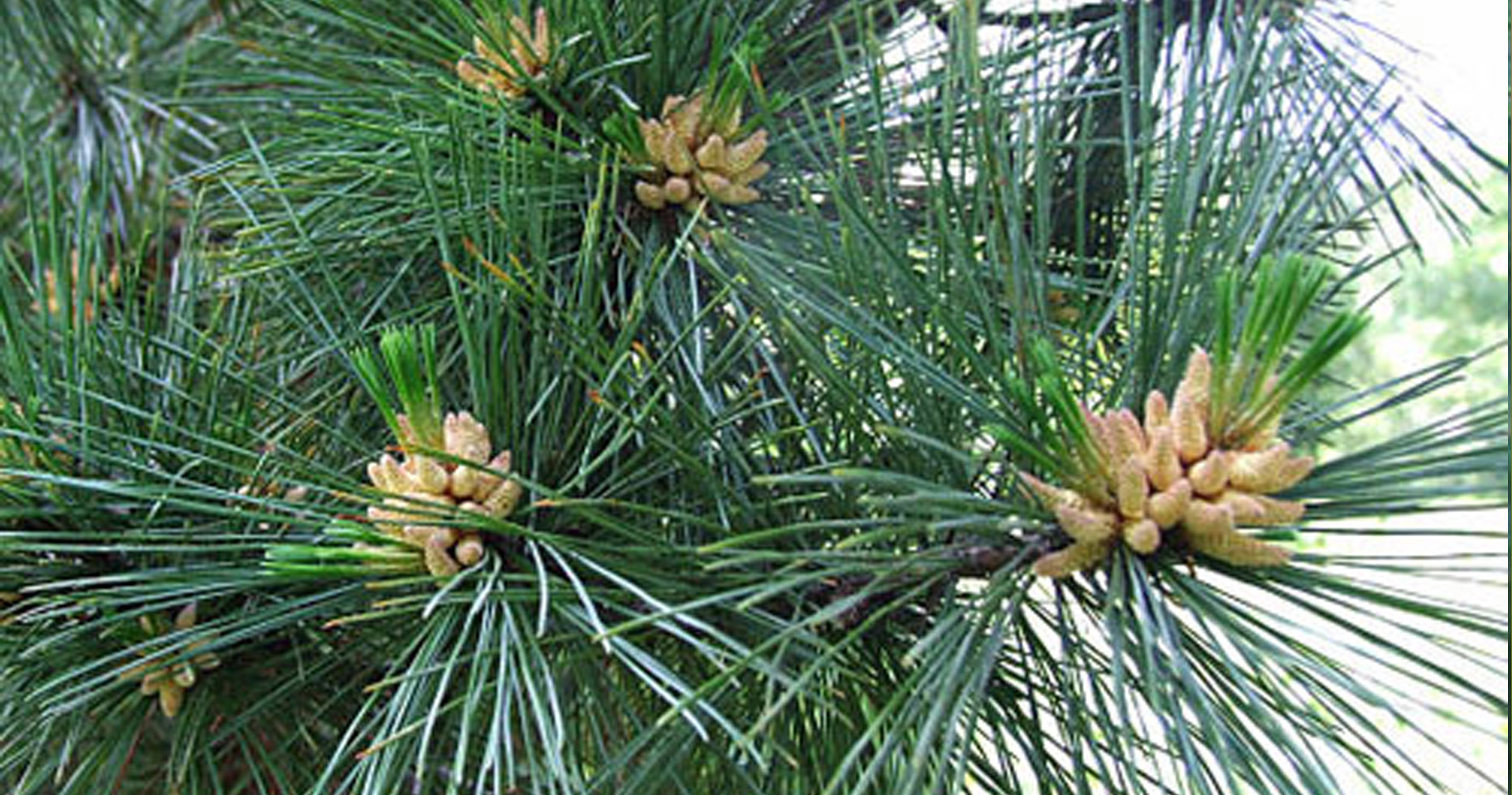95A0 Heldreich’s pine and Balkan pine forests of high oro-Mediterranean mountains

PAL.CLASS.: 42.7, 42.71, 42.715, 42.72, 42.722
EUNIS 2007: G3.6, G3.61, GE.62
Together, these high-mountain pine species make the upper forest border on Balkan mountains (Heldreich’s pine also in parts of southern Italy). Heldreich’s pine with Balkan pine, a pine endemic to Balkan, makes very significant mixed communities. These endemic forests are very important both from the aspect of their areal and for their specific ecology and erosion protection.
Included types: Piceo-Pinetum peucis, Pinetum heldreichii, Pinetum heldreichii-peucis, Pinetumm peucis.
Indicator species: Pinus heldreichii, Pinus peuce, Juniperus communis ssp. alpine, Lonicera formanekiana, Viburnum maculatum, Peucedanum longifolium, Fritillaria neglecta, Acrostaphylos uva-ursi, Aremonia agrimonoides, Erythronium dens-canis, Luzula sylvatica. Stachys officinalis, Fragaria vesca, Senecio nemorensis, Pinus sylvestris, Oxalis acetosella, Ajuga pyramidalis etc.
South-east European forests cover 23.5% of surface and are characterised by a pronounced biodiversity, which is a result of existence of both various climate zones and various geological substrates on which forests occur, as well as of human activities in the past. No doubt, from the botanical and forestry point of view, the most interesting elements of the Dinaric area dendroflora are made of endemic and relict species of Heldreich’s pine (Pinus heldreichii) and Balkan pine (Pinus peuce). This type of forest vegetation is spread out on high oro-Mediterranean mountains of Balkan and south of Italy. Although in some parts, they form mixed communities of Heldreich’s pine and Balkan pine, there is also an example where they make up monodominant associations. In such a case, Balkan pine forests develop in dry and skeletal habitats and are usually thinned by many elements of the surrounding grasslands while the Balkan pine forests develop on silicate substrates in the subalpine belt of the high Balkan mountains. These forests have a significant role in the ecosystem concerning erosion prevention and, in terms of their areal, they are endemic to the Balkan Peninsula, with a disjunction of Heldreich’s pine on the Apennines. The most common types are Piceo-Pinetum peucis, Pinetum helldreichii – peucis, Pinetum heldreichii and Pinetum peucis.

© EUFORGEN
Heldreich’s pine – Pinus heldreichii
Heldreich’s pine (Pinus heldreichii) is a tertiary relict, preserved on the Balkan Peninsula during glaciation and is an endemic species of trees to a limited, interrupted and small natural areal. It can be found in the mountains of Bosnia, Croatia, south-western Bulgaria, Albania, Macedonia, Serbia, northern Greece, and locally in the south of Italy. It inhabits pre-mountain (subalpine) and high-mountain areas to the upper forest border with individuals up to above 2000 m usually on steep rocky terrains of dry limestone, and rarely silicate substrate; it forms pure and mixed stands. It is usually found at the extremes of high altitude habitats (above 1500 MSL), with characteristic narrow ridges, reefs and rocks without competition of other species where highly developed and branched root system facilitates its survival. The species was first described from the samples of Mount Olympus, Greece as “Pinus heldreichii” by a Swiss botanist K. Hermann Christ in honour of Theodor von Heldreich in 1863. The following year, an Austrian botanist F. Antoine described the species from the samples of Mount Orjen on the border between Bosnia and Montenegro as “P. leucodermis” not knowing about the previous description by the Swiss botanist. Modern studies did not recognise the two descriptions as separate species. The differences were attributed to the fact that the sample collected by the Swiss scientist in July was immature and collected after drying. The scientists from Sweden, Germany and the USA published, in August 2016, that the oldest tree in Europe is a specimen of this pine in the forests of northern Greece. The estimated age is 1075 years.

© Jerzy Opioła/Wikimedia
Balkan pine – Pinus peuce
Balkan pine (Pinus peuce) inhabits mountain (subalpine) areas on the altitudes between 1000 m and 2400 m. It is moderately acidophilic species, grows primarily on acidic silicate rocks, and much rarely occurs on a carbonate substrate. Balkan pine is endemic to central part of the Balkan Peninsula with spread in Montenegro, Macedonia, Kosovo, Bulgaria, Albania and Greece. As a tertiary relict, it represents a relevant species on the Balkan Peninsula. It is a half-shade species, somewhat more heliophilic than spruce and fir, and more sciophilic than Scots pine.
